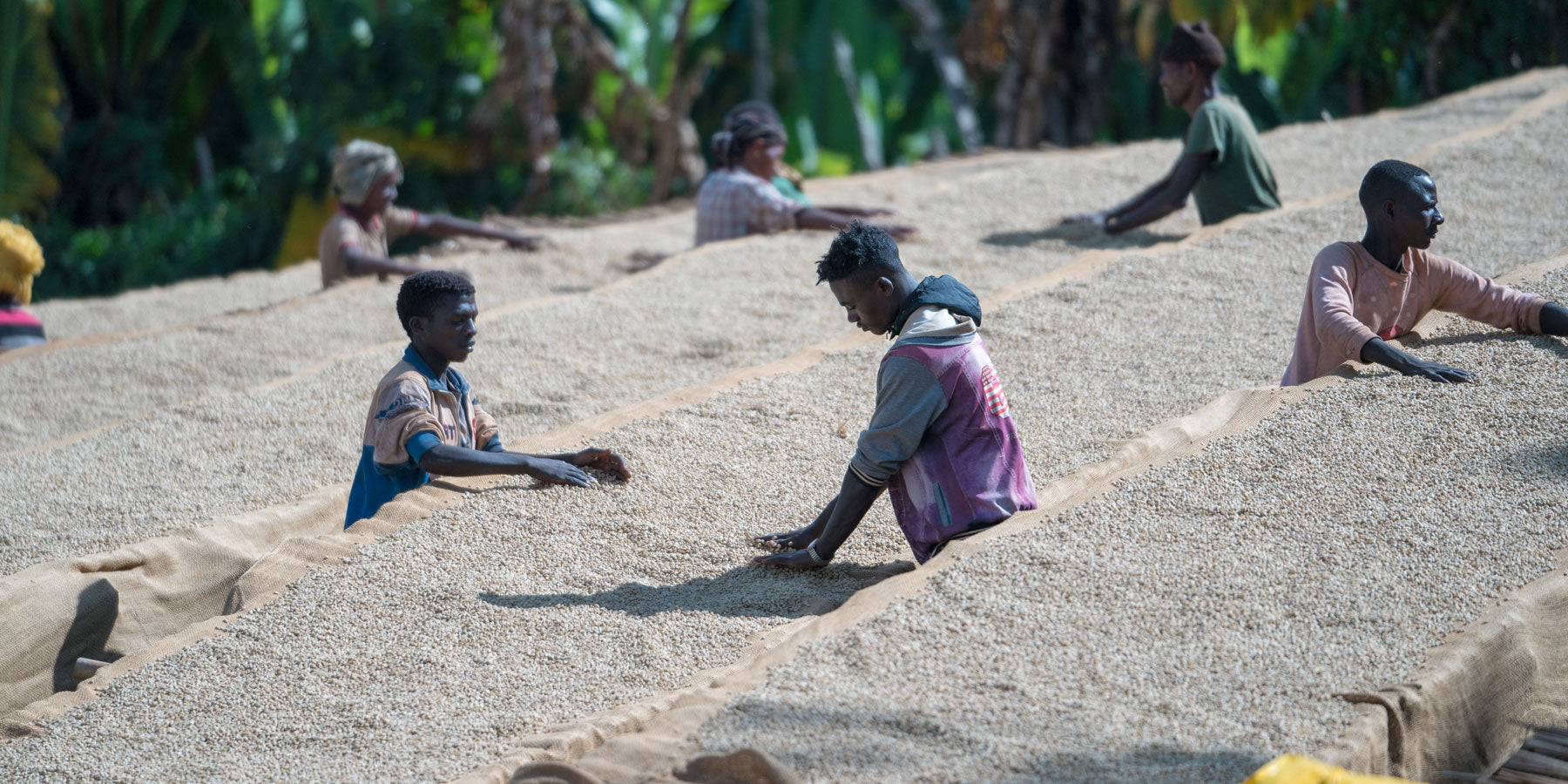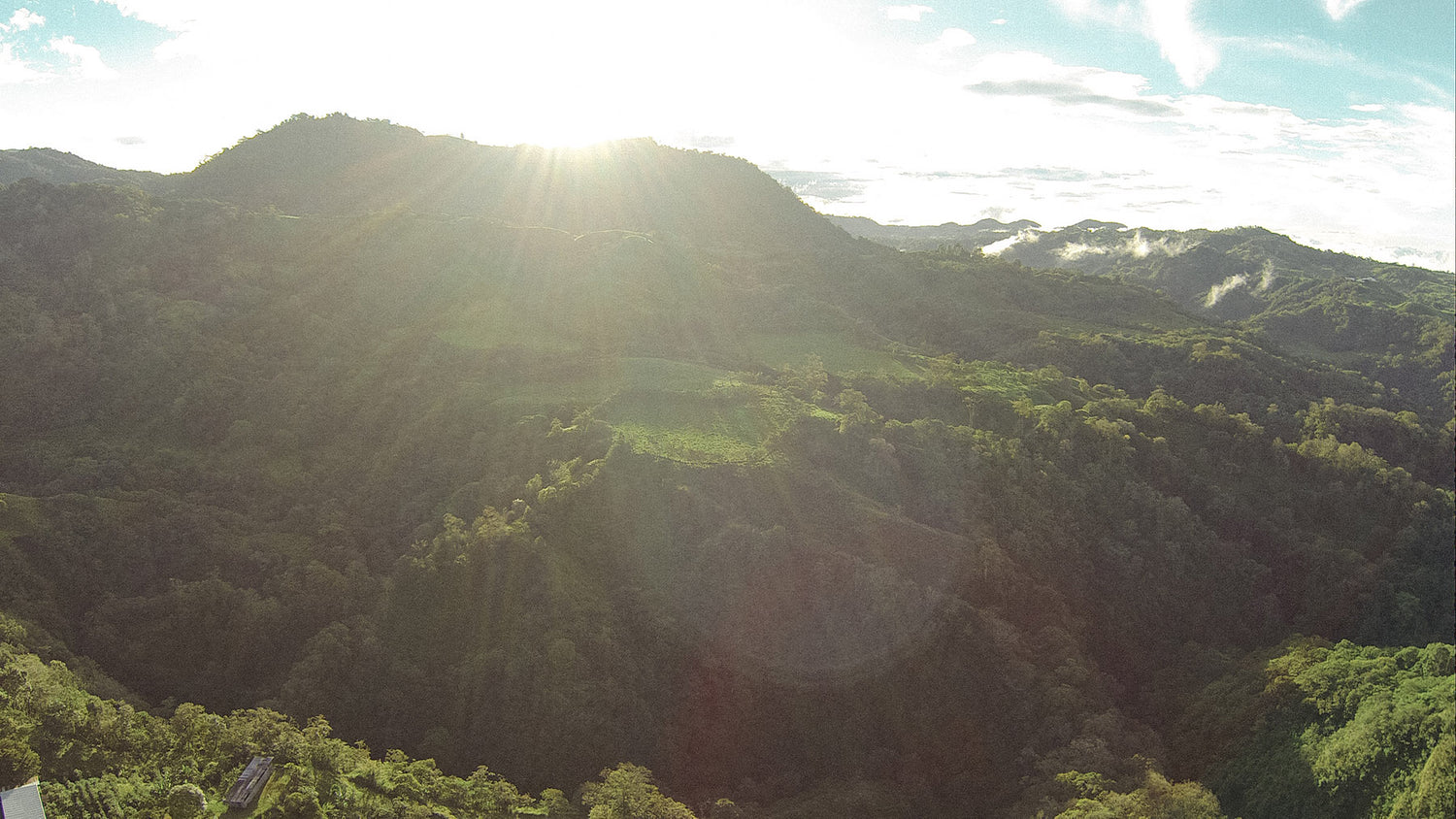With its floral, citrus notes, Ethiopian coffee is one of the most sought-after in the world. How is Ethiopian coffee grown and what makes it so special? Only Arabica coffee is grown in Ethiopia and the variety of individual varieties - many of which grow wild and some still undiscovered - is unique in the world. Coffee was probably exported from the country as early as the 17th century, but trade did not really take off until the 19th century. Today, coffee is the economic commodity par excellence and is the source of income for many Ethiopians . An estimated 15 million Ethiopians are employed in the coffee industry and the country is heavily dependent on coffee as its main source of income: it accounts for almost 70% of all export earnings.
Coffee from Ethiopia - Where does it grow?
In the forests of Ethiopia there are still many wild coffee trees which are part of the forest population there. These optimal conditions in terms of diversity, soil and shade trees are imitated by clearing small areas of bushes in the forests in order to plant coffee seedlings. The majority of Ethiopian coffee production comes from the population's gardens , so-called garden coffee. The coffee trees then grow among many other plants on the private land of the villagers. Since these many small harvest portions are brought to a cooperative for further processing and since it is often not known exactly which of the 10,000 - 15,000 varieties of Ethiopia it is, these coffees are usually referred to as mixed heirloom. The more precise classification of the different varieties is gaining momentum, however.
Only a small proportion, about 5%, is plantation coffee , which is cultivated on large plantations.

Coffee from Ethiopia - Processing & Taste
The cooperative takes care of sorting and processing the many small portions of the harvest. Traditionally, coffee was mainly processed dry . This results in very sweet, full-bodied coffees . The delicate, floral notes for which the country's coffee is known and loved are brought out more by wet processing, which is why more than 50 percent is now processed wet .

Coffee from Ethiopia -
Trade & Export
In 2008, the Ethiopia Commodity Exchange (ECX) was introduced as a trading platform. The aim was to develop an efficient trading system to guarantee the rights of sellers and buyers. However, it was also an opportunity for the state to earn money from the immense quantities of coffee traded and from exports. Until the ECX was founded, producers were also able to sell directly to export markets . With the state reorganization, determining the exact origin became increasingly difficult. When the coffee arrives at the ECX production facilities, it is repackaged and categorised according to cup profile and quality before being auctioned to the highest bidder. These measures are very positive for consumers due to the uniformity of the cup quality. But stable, good quality ultimately also leads to a better price for the producer's goods.
Traceability of coffee from Ethiopia
However, due to the merger, the coffees can no longer be clearly traced. And that is exactly what small specialty coffee roasters want. The coffees exported by ECX (which is 90% of all Ethiopian coffee ) make it impossible for roasters and importers in the buyer countries to assign the coffees to exact cooperatives or farmers.


Specialty coffee from Ethiopia
However, as rules and regulations are loosening - 10 percent of the coffee grown can now be bought through cooperatives - things are moving in the right direction, albeit slowly. Specialty coffees therefore come from those 10 percent of coffees that can be assigned to a very specific cooperative and embody its special flavor profiles accordingly.
Importance & Tradition of Coffee in Ethiopia
Ethiopia is one of only a relatively small number of producing countries - like Brazil, Colombia, India - that also consumes a large part of its production internally, namely about half of the amount produced. The importance of coffee in Ethiopia is immense not only as an economic good, but also as a cultural heritage. For centuries, coffee has been enjoyed very consciously and is valued in a set ceremony. Social interaction is often equated with "drinking coffee".
The 3 most important growing regions
of coffee from Ethiopia
Sidamo
The Sidamo growing region covers a large area in the fertile highlands south of Lake Awasa. It consists of over 20 different administrative areas, called "woredas", with different microclimates and altitudes. Accordingly, there is a wide range of varieties and cup profiles that are labeled as Sidamo. The Sidamo region is one of three trademarked coffee regions in Ethiopia, along with Harrar and Yirgacheffe. They are known for their perfect climatic conditions for coffee, in the form of altitudes between 1,500 and 2,200 meters above sea level, abundant rainfall, optimal temperature and nutrient-rich soils.
Around 60% of the region's coffee is washed. But some special sun-dried coffees also come from Sidamo. There are more than 50 cooperatives here, as well as many private coffee farmers who can bring their coffee to over 200 washing stations. Sidamo is a respected growing region from which very high-quality coffee can come. However, due to the immense quantity, there are also large differences in quality. The special qualities have crisp acidity with refined sweetness, floral and citrus notes and an elegant aftertaste.
Yirgacheffe
Yirgacheffe is part of the Sidamo region of southern Ethiopia, but its often outstanding washed coffees are so well known that they have been separated into their own micro-region , trademarked by the Ethiopian government. Yirgacheffe's steep slopes are very fertile despite their altitude, with the majority of the coffee growing at 2,000 metres and more. The densely forested hills are home to a multitude of houses and villages with garden coffee growing on their land. There are around 28 cooperatives in the region, representing some 45,000 coffee farmers and their 60,000 hectares of garden coffee. The coffees here are mostly washed, although a smaller amount of sun-dried coffee also comes from Yirgacheffe. Our Ethiopian coffees also come from here.
Limu
Limu coffee grows in southwest Ethiopia between 1,100 and 1,900 meters above sea level and is known and sought after for its sweet, spicy, winey flavor and balanced body. Washed Limu coffee is considered one of the best highland coffees in Ethiopia. The bean is medium-sized , has a characteristic rounded shape and a strong green color.


